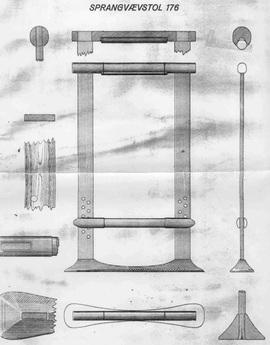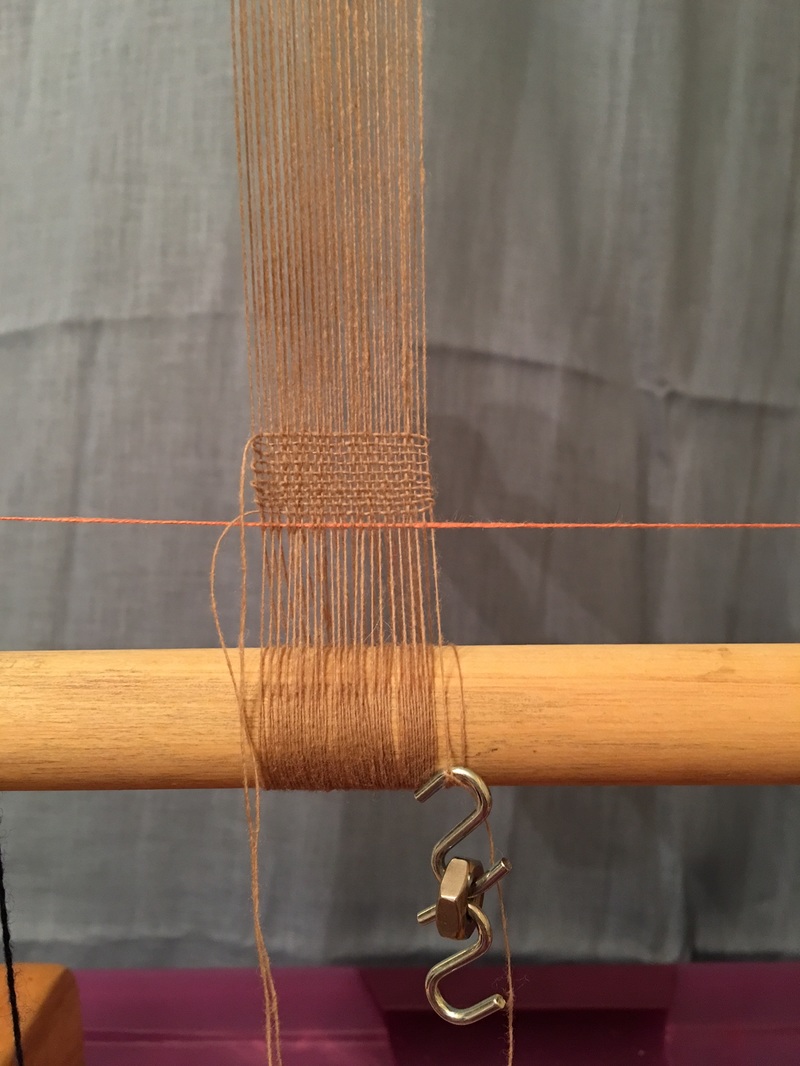
But I have been trying to puzzle a few things out about the loops at the ends of the fringed items, and how the spacing was kept with out a tablet woven starting border. (Spacing by hand would not be difficult with a thicker yarn, but with a very fine yarn it could be a continual pain for the weaver.) String heddles some times help spacing, but sometimes they also can botch it up.
In Viking Age Headcoverings from Dublin, Elizabeth Wincott Heckett suggests that the headcoverings might have been woven on a two beam loom similar to the one found at Oseberg (which is also thought to be a sprang loom and possible the item that the famous Oseberg tapestries were woven on). Loom is pictured to the left.
Recently while cleaning I discovered a now unused stand that held wooden TV trays. I have repurposed it as a sprang frame/two beam loom, and figured I would play around with weaving a headcovering vertically.
I am more than pleased that my theories seem to be working out!
To get the warp yarn to space fairly evenly with little fiddling, I oped to wrap the warp around the beam an extra pass before stretching it down to the next beam. I did half my test warp in this manner, and half with two wraps between each vertical warp yarn. (A weaving comb would work to space for a thicker warp, but you would have to have an exceptionally fine comb for this and take care with it to not damage the fine warp yarn.)
In practice, it does very well at setting the spacing AND the additional wraps will allow me extra yarn at the ends to twist the fringe that will have the little looped ends that so many extant examples have. I absolutely cannot wait to try weaving some items on this loom now!
| |
If you are interested in the headcoverings from Dublin, or Viking Era weaving in general, I cannot recommend Heckett's book enough. It is an amazing resource and has very, very detailed information about each item (thread counts, thread sizes, color, etc.). http://www.oxbowbooks.com/oxbow/viking-age-headcoverings-from-dublin.html



 RSS Feed
RSS Feed